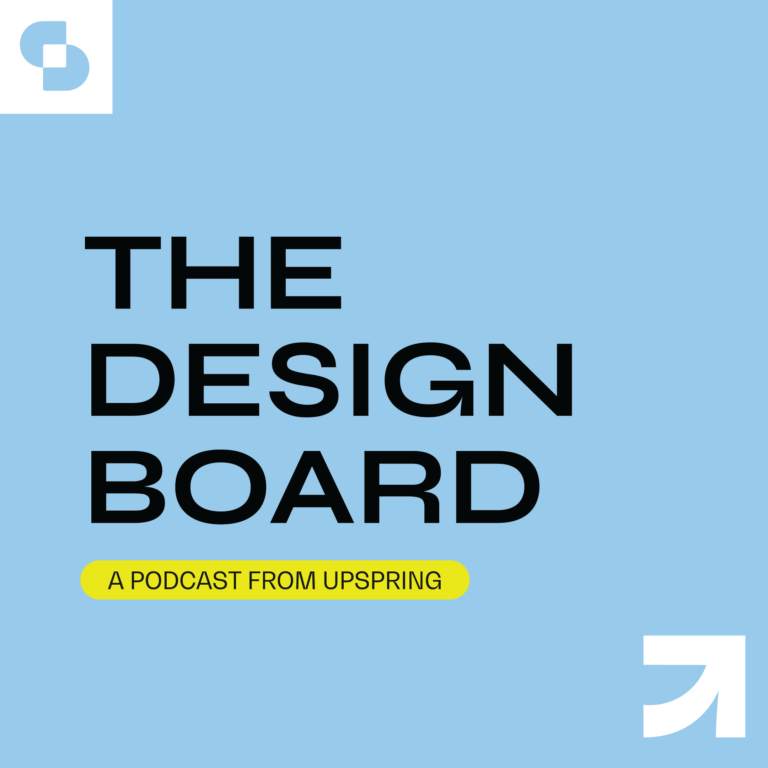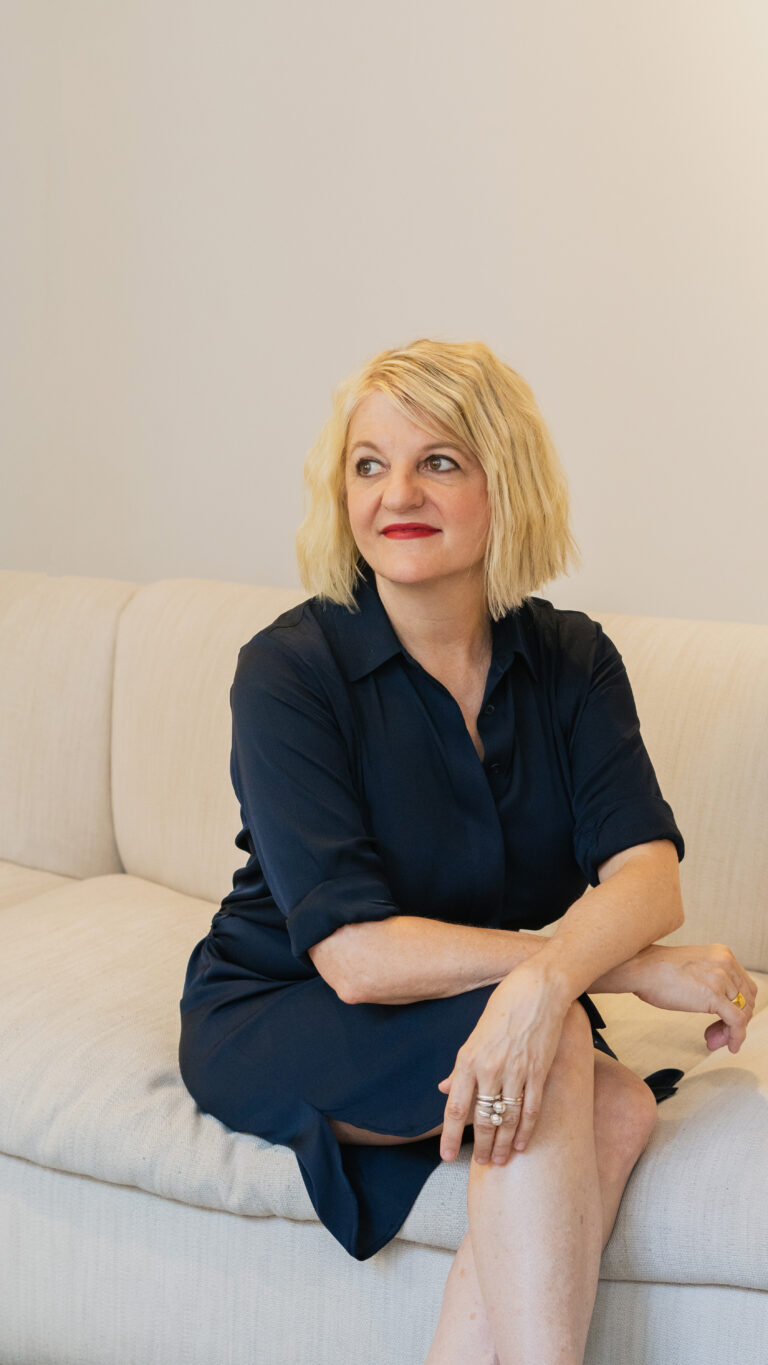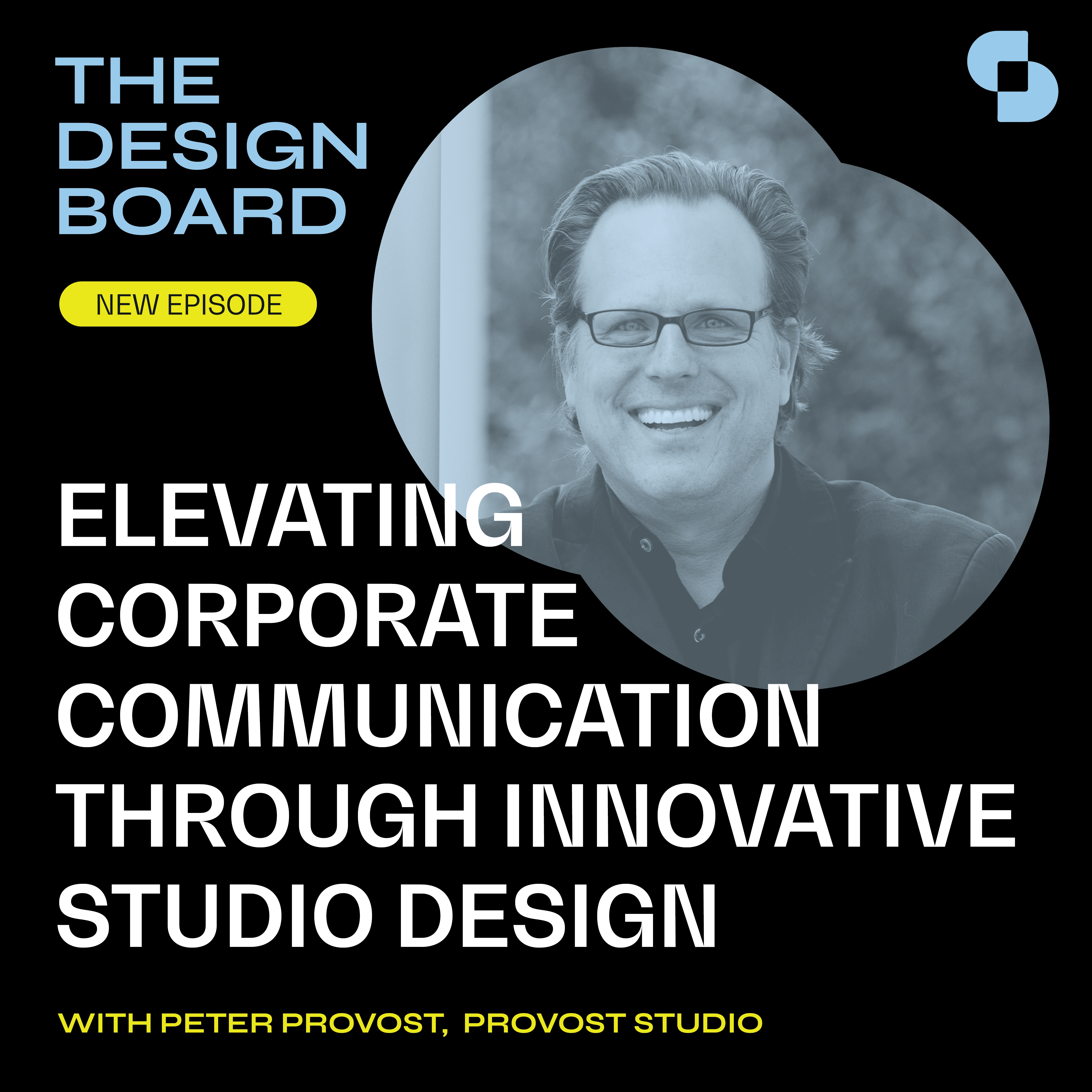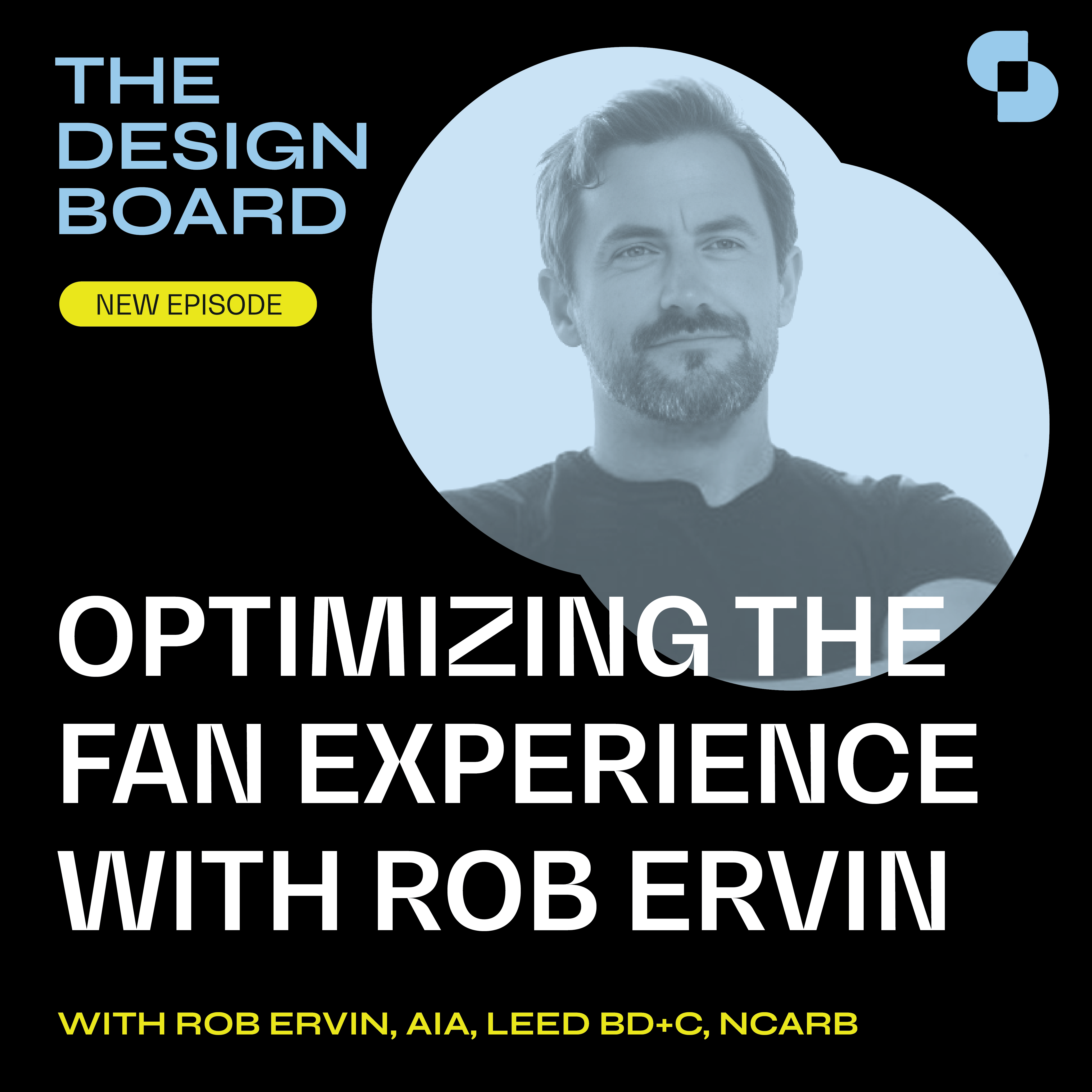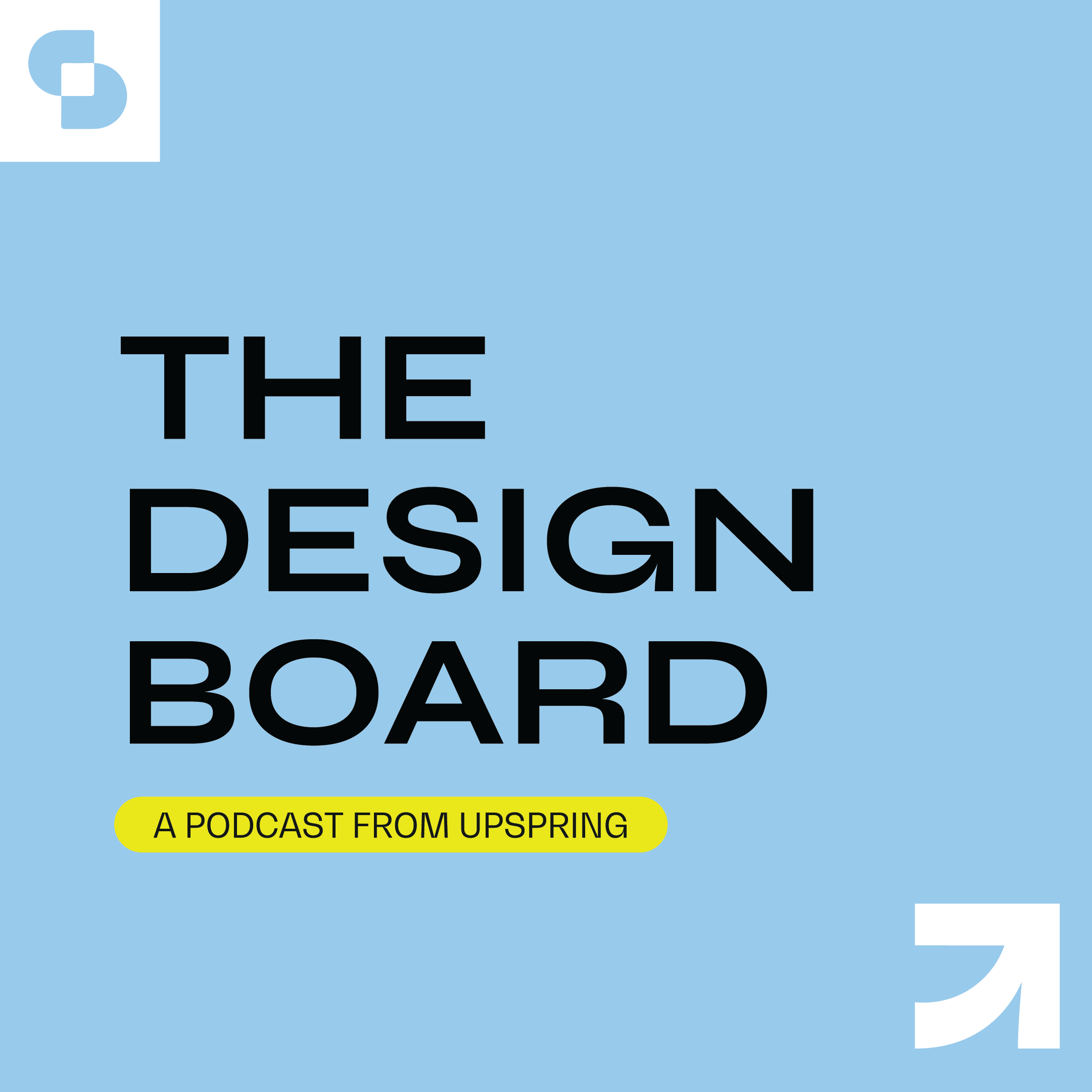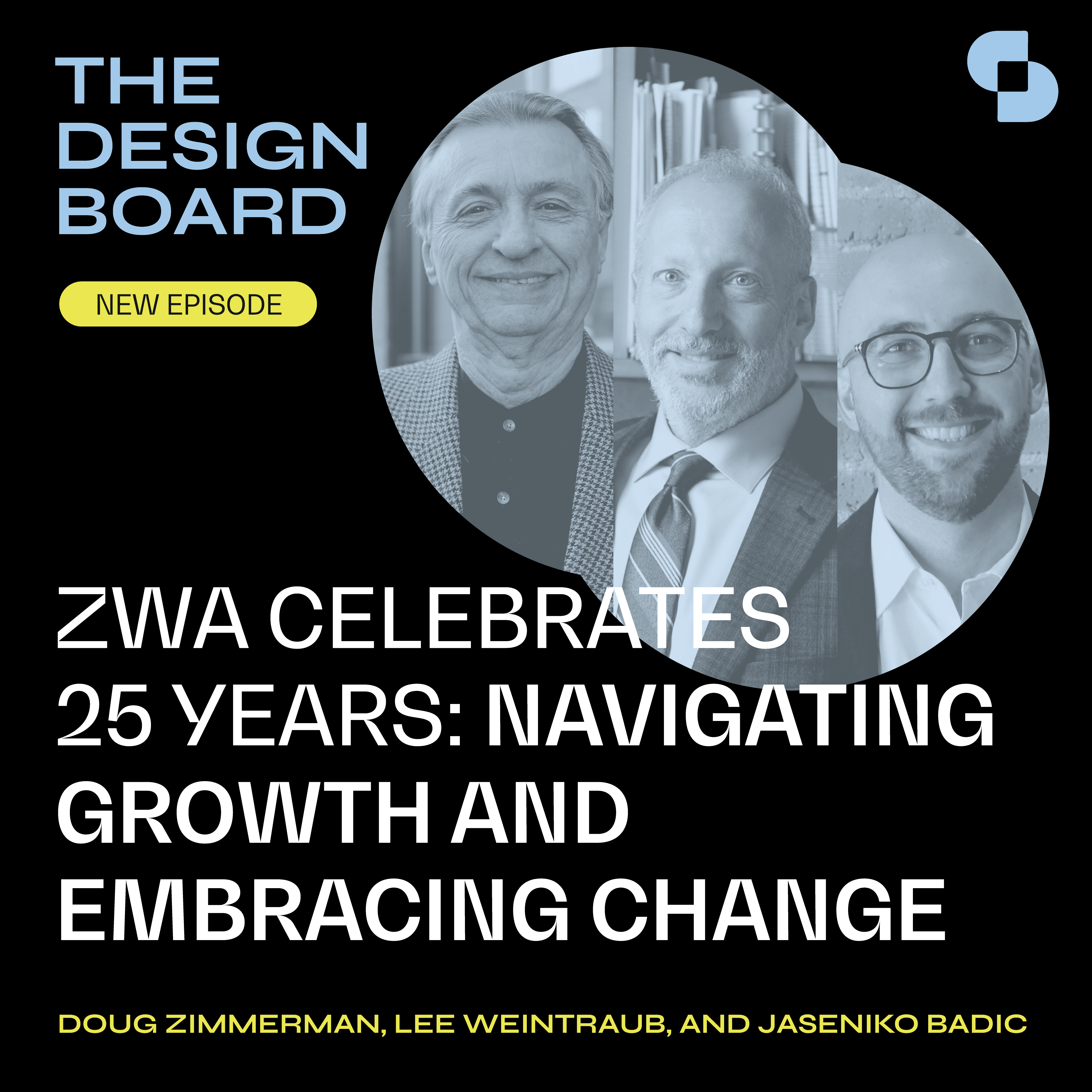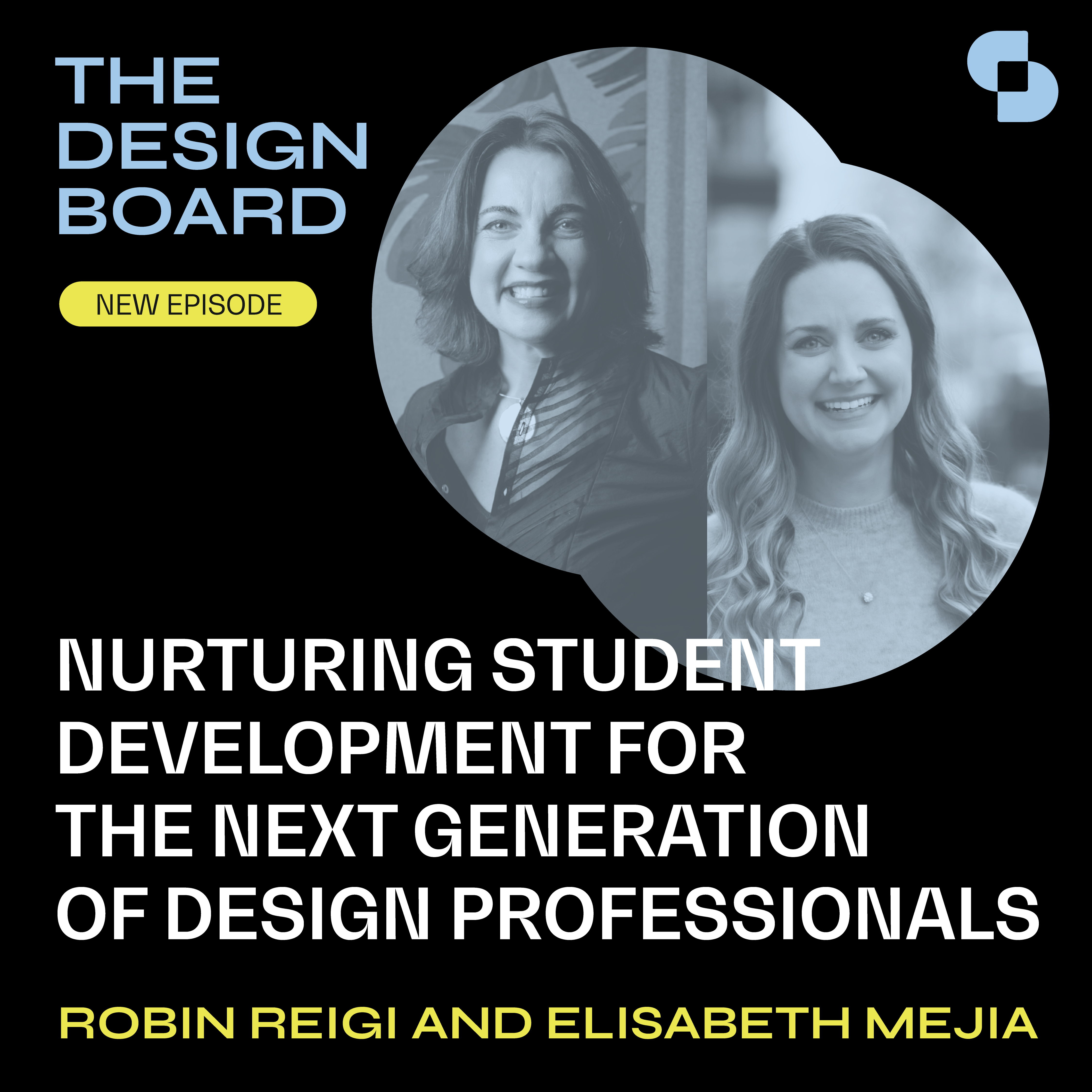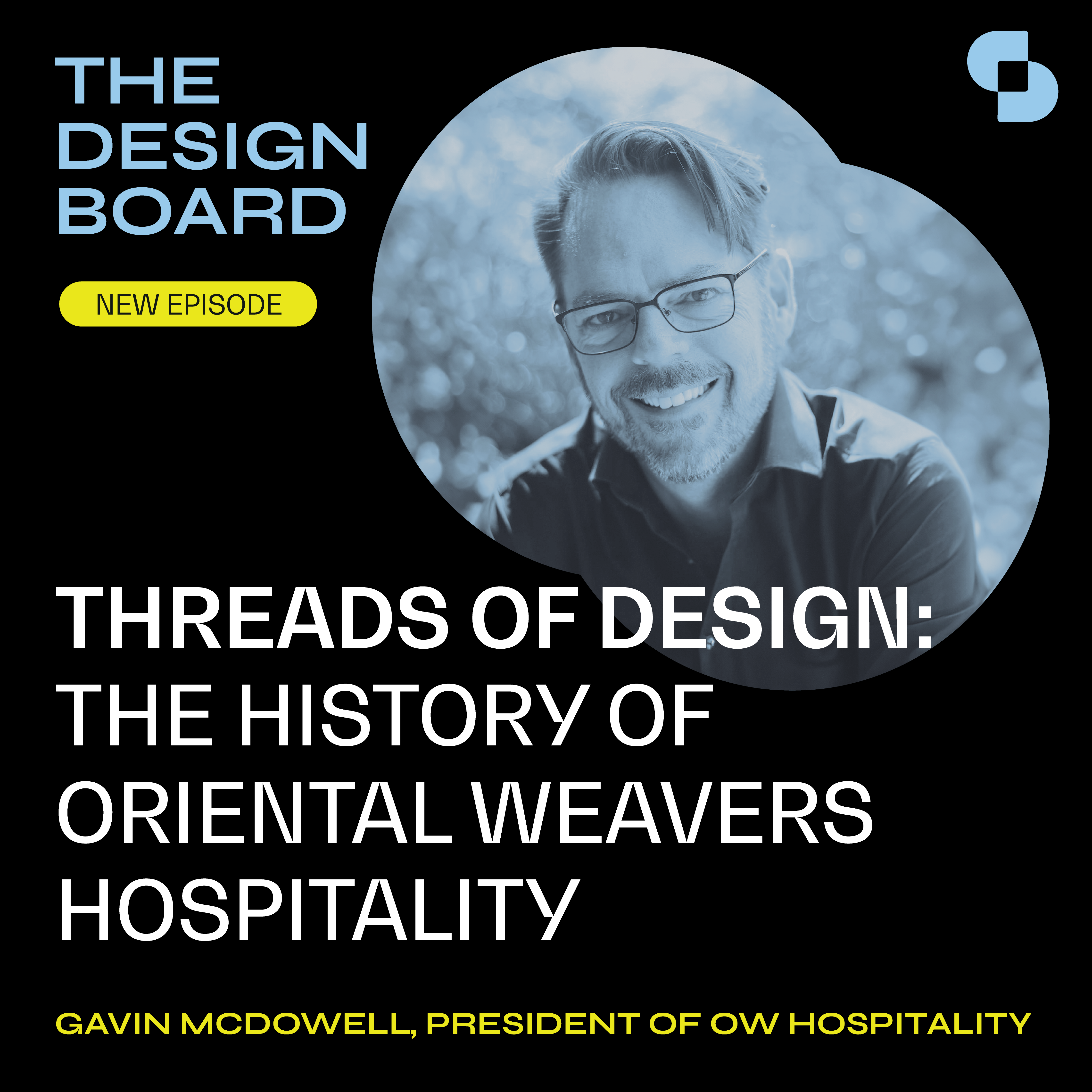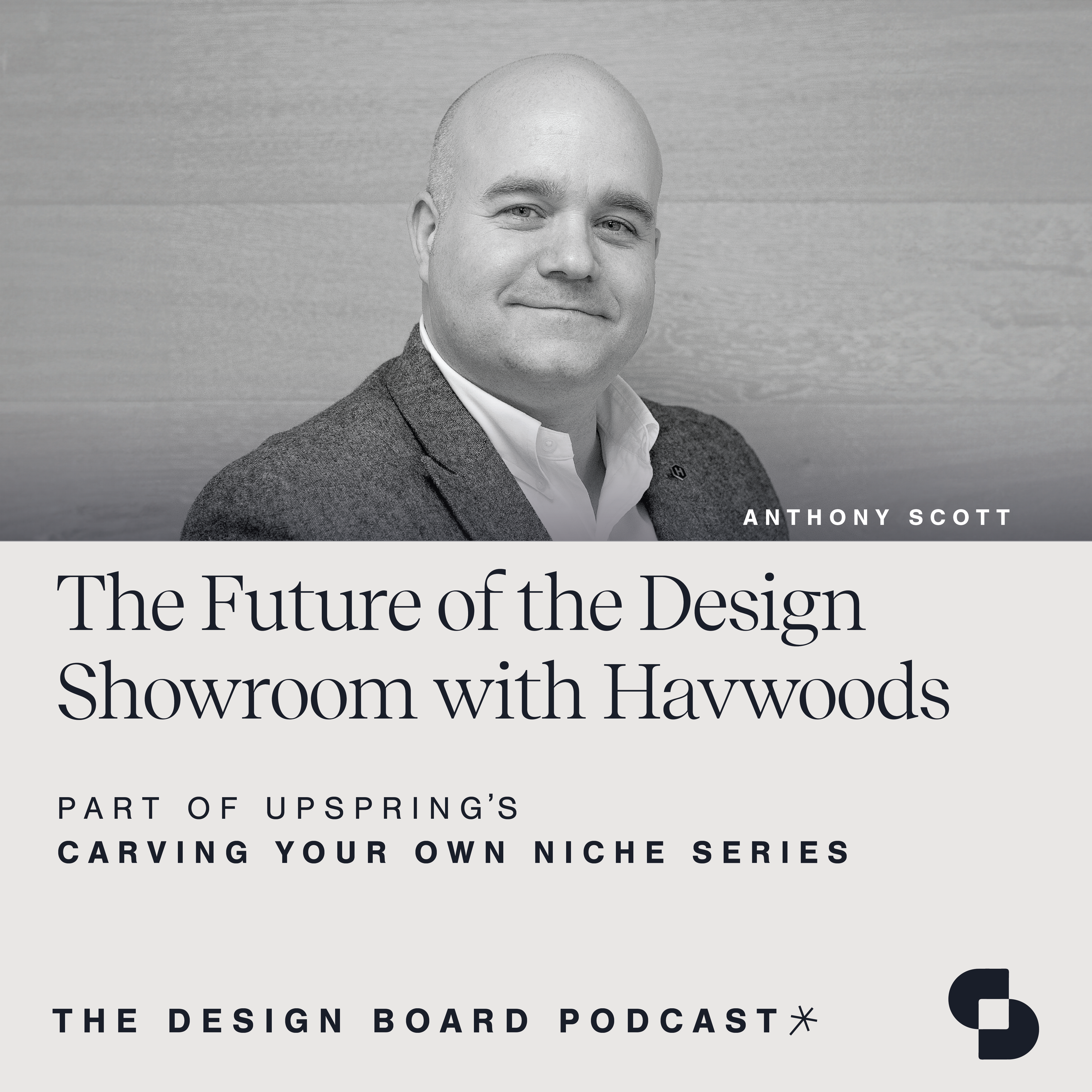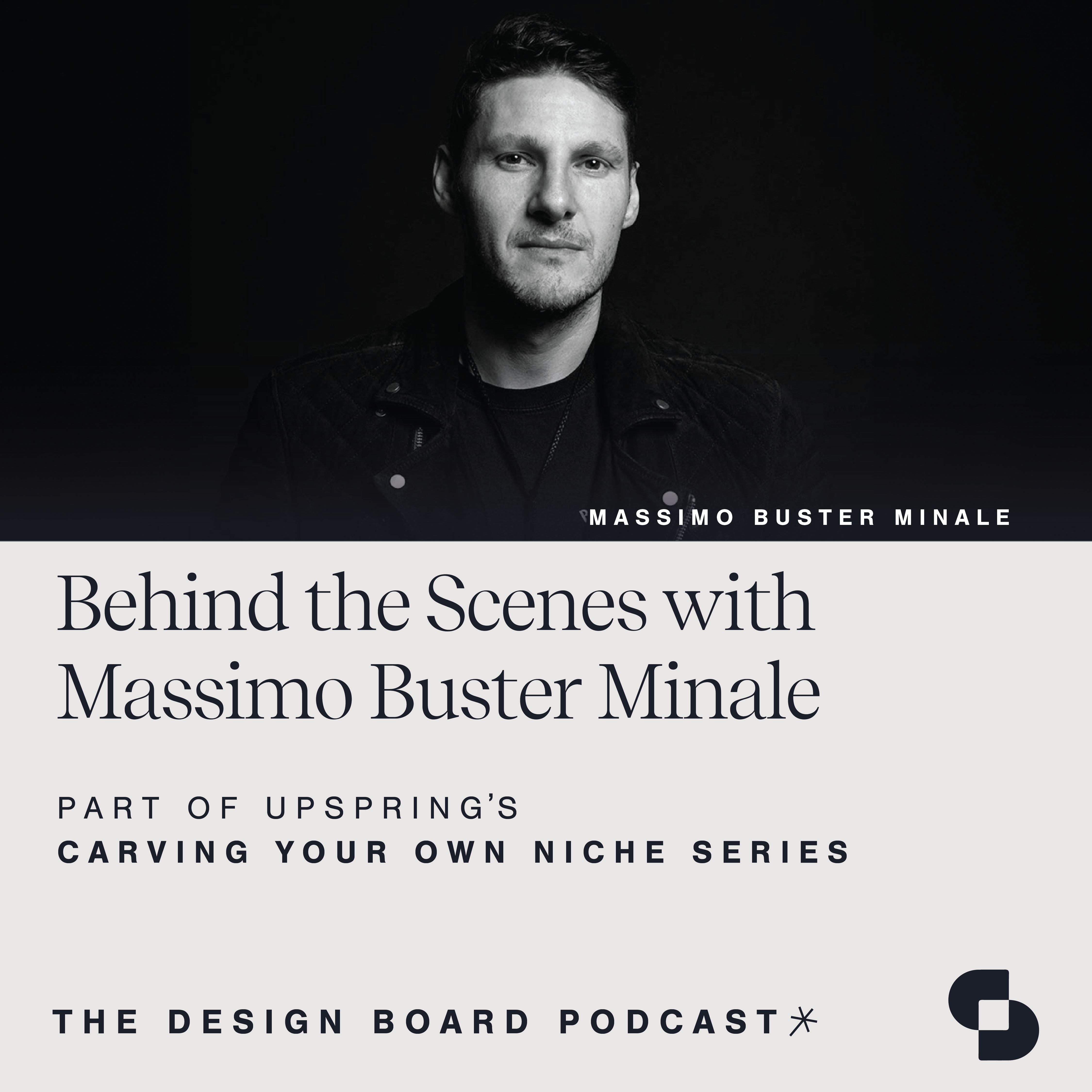In this week’s episode, host Susan Fernandez is joined by Kevin Erickson, a digital accessibility expert. Kevin’s mission is to empower teams to create accessible and usable products. This conversation explores the world of digital accessibility, covering its importance, best practices, and common challenges. Kevin will debunk myths, walk us through project strategies, and share real-world success stories.
The Design Board, by UpSpring, is a proud member of SANDOW Design Group’s SURROUND Podcast Network, home to the architecture and design industry’s premier shows.
Welcome to The Design Board, a podcast created by the team at UpSpring that focuses on design, development, and everything in between. We invite innovators in our industry and explore topics that support your growth in every way. The Design Board is a proud member of SURROUND, a podcast network from SANDOW Design Group featuring the architecture and design industry’s premier shows. Check it out at surroundpodcast.com.
Susan Fernandez: Welcome everyone to The Design Board, a podcast by UpSpring that focuses on design, development and everything in between. We host innovators in our industry and explore topics that support your growth in every way. I’m your host Susan Fernandez, and today I’m joined by Kevin Erickson, an expert in digital accessibility. Empowering teams is Kevin’s overall goal so they can produce products that are accessible and usable.
Doing this successfully depends on the quality of the product, which starts and ends with each market ready iteration using proper performance testing, W3 accessibility standards, compliance, updated documentation, proper code management, and commenting, which is also known as health and hygiene. These ensure the end product will allow the users to complete their tasks with absolute ease. Thank you so much for being here today, Kevin. That was an entire mouthful. So I am so excited to dive into this topic because I feel like this is missing in the market. People don’t understand it.
Kevin Erickson: Yes. Thank you so much for having me. Yeah.
Susan Fernandez: Thank you for joining us. So I would love to start with just the basics. Give us an overview of what digital accessibility means, and why is it critical in today’s digital world.
Kevin Erickson: Okay, yeah, that’s a wonderful start. Because first of all, if somebody hasn’t been exposed to accessibility or digital accessibility, then it’s great to just know some foundational pieces.
So when I think about accessibility, I’m thinking about, for me personally, I’ve been working in digital accessibility since starting the public sector in 2007. And when I think about all those different things I’ve done, whether it’s a mobile app, a website, or just documentation, slide decks, video with closed captioning and so forth, it’s always about the end user for me.
There are other factors. We have search engine optimization, which is something we’ll probably touch on. There’s also how teams work together, and to implement it correctly, and to cover yourselves from any type of legal liabilities. These are all important things. But generally, I think the direction to go with that question is I think about how many users are affected by this.
So I’ve seen recent stats, 61 million adults in the US live with a disability. And that’s a big number that a lot of people maybe are not aware of. I think it’s important, just to mention about accessibility really quickly, I’ve got this wonderful graphic that I maybe could share with everybody later or with you, so you could put it with this. But it’s a pretty classic one that I’ve only just added on, but I’ve seen it multiple places. It’s like a table and it’s three columns. And one, two, three, four, five rows. The columns are of disability types. So we’ve got permanent, you’re born with it. It’s something that happened maybe in the womb or something like that. It could be an injury, permanent amputation, or something like that. Then the next column is temporary. This is where somebody’s broken an arm, they have an ear infection, so they can’t hear. Laryngitis is a temporary one that can’t speak.
And then situational, or we have a classic one that I’ve heard many times is a parent holding a baby. So they’re basically just temporarily not able to use both of their hands. A distracted driver, a bartender where it’s super loud or you’re using closed captioning in a loud place, so you’re actually reading the closed captioning. And then even English as a second language or ESL as it’s typically called. So that would mean the accent is heavy or they’re having trouble with idioms or phrases, adages and so forth, that just maybe we take for granted when we’re in our native language.
Then I added a little row at the bottom, which are the cognitive or invisible ones, and that’s where we’re affected possibly permanent learning disability. A concussion would cause a temporary situation where memory is a big factor. And then because of a situational one, might be sleep or something along the lines of an illness that could be situational. So you could just be in a loud area that the sounds are so distracting that you can’t concentrate. I mean, that’s a start. Hopefully that kind of gives you an idea, but I’d be happy to elaborate.
Susan Fernandez: That is really fascinating. I had never considered anything from a permanent injury to simply holding a baby, and now you only have one hand. So it’s a lot to consider.
Kevin Erickson: Well, Susan, I just wanted to add one thing. It’s one of my favorites, and I need to put it on there. But a lot of the disabilities that we have, and I’ve got a list of them of course, if we want some examples. But as we get older, if we live long enough, we all develop our own disabilities, whether it’s hearing, movement, eyesight, and so forth. So it will affect 100% of us if we live long enough.
Susan Fernandez: Yeah, that’s something to really think about. Okay, so you’ve laid it out. It’s so rich and complex. There’s a million types of situations where I wouldn’t typically think of it as a disability or some type of additional communication strategy would have to happen. But of course, you’re running through a busy airport, you’re trying to get information. How are you getting information? It makes a lot of sense. There are so many times when you don’t even think about it, but somebody has thought it through. So now you do have closed captions and you can get the information even if you’re in a crowded, crazy loud space.
Now, our audience is probably thinking more of their websites, their communications when they’re doing presentations. So if people are interested in implementing digital accessibility, which I would actually say it is a law now. I mean, there are laws where you have to be accessible. What are the best practices and strategies that they can consider?
Kevin Erickson: Right. So what are the best practices and strategies? I’ve got these questions ahead of time, so I made a couple of lists just as some pointers. They’re not in any heavy detail. But it depends on the process of the team or the company. So it could vary a little bit. Of course, I’m going to, as the title mentions the Agile framework and methodology of Scrum or Kanban. Typically, it’s nice to have some type of a framework where everybody can work in so that there’s a process and the visibility. So that’s a great start right there. And I could go more into detail, but that could be a whole discussion or podcast on its own. But it’s a great one and I think it’s really important.
If I could go back just a moment, I went to work for the Virginia State Department of Education in 2007 as a web developer, front end web developer. And one of the first tasks I was given… And I’m just going to go on a little tangent, stop me if I’m going too deep into this. But I think it’s important just to mention really quickly that I was given the digital accessibility for thousands of pages of the department website, and I had never really worked with accessibility before that. So if you want a button here or a fly up menu here, I’m like, “Let’s do it. Let’s do it.”
And now looking back after these years, certain things, the process to know how to implement accessibility in a smart way, that’s going to work for everybody, of course. But then there’s also the Agile. I wasn’t exposed to Agile. I became a certified Scrum master in 2012, and this was a huge change, kind of like all the missing puzzle pieces for me.
Basically, when you have the Agile framework mixed with it, implementing anything, especially including for this conversation, accessibility, the things are laid out. So the backlog, everything we got to do, it’s a daunting mountain of everything we have to do. But then we strategize on that and groom it so that we start off with the first iteration or sprint, and then each one builds off of that one. And by design or by theory, each one of those sprints has a product that is somewhat ready for release, and then you build off of that into the public.
So with that said, we want to make sure that accessibility has a part. It’s not just some type of a whispered piece that we’ll get to at some point. It really needs to be put in the very beginning.
So a lot of companies, or design groups, or product groups, product owner groups will start with user stories. As a user, “I want to do this, so I can do that,” kind of thing. If the persona… So we create personas. We’ve got this person, their gender. It doesn’t matter gender. I’m just putting that out there, because a lot of times you’ll choose, you’ll make this person a detailed person. They could be from this demographic, they’re this age and so forth. So we’re creating, and then we create multiple personas.
My thing is to create personas with disabilities. And right there at the beginning, as the people are coming up with the concepts of how this product or website is going to work, we’re already thinking. And we can’t get around this person who one of our personas, they’re a fictional persona that we created is blind, or has a mental disability, or an amputation, a motor impairment of some sort and so forth. So now we’re creating that. So that’s a really great start.
And then as we’re using the Agile framework, then we have that visibility that we know what is being completed, who’s got what task. And there’s multiple ways, but you want to make sure that the accessibility that’s in each of the tasks within the project are being covered and specify the accessible requirement. So that’s one thing.
Susan Fernandez: Well, I think just for our listeners, I just want to clarify. So Agile is really something that was developed by tech teams to bring products to market, using a fast to fail, minimum viable product. So you’re moving ahead in these sprints to make sure that everything is working properly, and it allows you to really tighten the span of time to create these things. And also, they are more nimble, they can be more tailored by the time they come to market. I think we all remember when websites would come to market, and after you’d publish them, people would think, “Oh my gosh, what is this? It’s not working.”
But the other thing that we think a lot about in marketing is personas. So we do personas all the time. We do them for our clients. And every good business owner should understand who is coming to their site.
But we tend to think in terms of very broad demographics. Even if we are thinking of something as I am a manufacturer who sells to an interior designer, we’re thinking in that term, but we rarely go into, what if that interior designer does have a disability? What are those things?
So I think for our listeners, one of the very simple things that Kevin pointed out right away is this contrast between type on the website. There’s such a trend right now to use typography that are these fonts that are really thin, and maybe we’re doing white on a pale gray because we love this minimalistic look. But at the same time, now we’ve created a accessibility nightmare.
Kevin Erickson: It’s everywhere, it is. If I may just add to the points on your Agile, I think it’s really important to… Sure the audience knows, but for me it’s really important to contrast it with the waterfall like you mentioned, or hinted to, or really pretty much said is that you start here. And then nine months later, for example, you got the end product. And it’s completely wrong or it’s completely, timing is messed up, it’s too late. And you’ve wasted all that time.
So the nice thing about Agile, in contrast to that is that each of those iterations is a checkpoint for stakeholders and everybody else to see what’s going on, because you’ve got a product that’s a functioning… It may not be complete obviously, but it’s functioning to some degree, at least a part of it.
And then the other nice thing is at that moment we’re like, “Hold on. What did I just see there?” Say the product owner or one of the stakeholders, I think something happened here, this has changed or that’s wrong. It’s been misconstrued. And you can pivot right there instead of at the end of that nine month example. So I think that’s really important.
And same with accessibility though as well. You can pick up things on that, but generally I love Agile for so many reasons. Because instead of boiling the ocean, you can kind of just take up as much as you can work on at that moment and break it up into smaller chunks.
Susan Fernandez: Yeah. And I think that’s really important for most listeners, because these are the types of projects we’re taking on. Which for each individual business, a new website is a big deal, but of course they can be very simple sites to very, very complicated e-commerce driven sites with a lot of parts and pieces. But taking a step in that process to say, who are we serving and why are we thinking that everybody has the same ability, the same eyesight, the same everything is really important.
Kevin Erickson: Yeah. The thing that I was oping about a moment ago is that one of my favorite things about Agile when I first founded it is when it came to me, I was sent to a three-day class. And right in the middle of this three-day learning, I’m like, “Whoa, hold on. What am I hearing here?” And all the puzzle pieces and finger tingling was happening. I’m like, “This is something I’ve needed my whole life,” and I got it really late.
But what I was going to say is in part of the definition of Agile is zero defects. And you apply that to accessibility and getting zero violations. This is one of the most powerful coupling, I like to say peanut butter and chocolate put together. They work so well together. And I just had to mention that, why I love it.
Susan Fernandez: Yeah, thank you. So what are some of the misconceptions surrounding digital accessibility, and how can we debunk them?
Kevin Erickson: That’s a good one, because there are continually… I’ve got a couple of them I’d like to mention today, maybe six depending how far we get. So as I mentioned with the number of 61 million adults, and it’s only growing, so the number of people that are affected is a big misconception that needs to be echoed or reiterated.
Another one that I hear teams all the time still, just recently actually, again… And it’ll continue, but it’s good to remind ourselves that accessibility, the sooner we put it into the system development lifecycle, the SDLC, or the project, the better it is. So I’ll hear, “We can do accessibility at the end, we’ll just go in and pop it in there,” and it never works well. It’s always wasteful and there’s a lot of rework. So when you put it in the beginning, like with those user stories and the personas, you’ve already got it built in, it becomes second nature. There’s no rework. That accessibility kind of falls into place.
Another one I’d like to say is that I’ll hear that it’s wasteful of time and resources, but it’s actually not. It does the opposite. I’ve heard that it does not add real value to the product. And I would say that every time, from my experience, it 100% makes it so much better.
I’ve also heard, I’ll hear it time and time again that it’s difficult. And I would agree that it’s a big subject, and anything that’s big is going to have its challenges. But you can start at those high critical pieces, those ones that are important and strategize. And we use thinking of how each one of these have their ease of implementation or how difficult they are. So you can kind of weigh in, get all of those that need to be done. And it’s quite easy to decide which ones you need to work on at that point in time in the product development.
And then lastly, I wanted to say that I’ve heard, at least for now, there’s probably more, but accessibility can limit creativity. And I’ve heard this from designers. And I would say that it’s absolutely the opposite from my experience. And those teams that have said that before and afterwards have had a change of thinking on that as well. There’s examples.
So we have one example, I just want to say this one because it’s my favorite. But when we think about, I was trying to think of a good example to show that accessibility does not limit creativity. So I did a search and just popped around. I’m like, “All right, I’m going to do a search for beautiful staircase design.” And so I start getting all of these images of the most amazing, they’re super futuristic, or from the 17, or before, and the woodwork or the metal and the curvatures, and they were amazing.
And I was thinking how important if you didn’t have accessibility and all of these staircases are accessible. There’s some really horrible examples of people getting from point A to point B in physical world that are just not going to work and they were really poorly thought out.
But when you have a staircase, at least the examples I’m talking about right now is you’ve got a certain step height and step width, and it has to be anchored properly so nobody’s going to fall off and hurt themselves. But they’re also accessible for as far as for construction purposes.
Now obviously, we’re going to have ramps for people that have a wheelchair and so forth. But just speaking of the creativity piece on typical staircase, I know I need to go back to the drawing board and find one that’s more accessibility related, but that’s just one example.
And also with music, we have to think about certain sounds. We’ve all heard somebody that maybe composed something that’s not music to our ears so to speak. So there’s certain rules that we follow to make something that’s actually usable and beautiful, but also functional. So there’s a couple examples, but those are a few of the misconceptions. Yeah, for sure.
Susan Fernandez: Yeah, that’s really interesting. I think for artists, usually when there’s more restrictions, the better the art. And I wouldn’t say that designing for accessibility is restrictive. It just means that you have to think about things in a new way. And once you start pushing your brain that way, then all of a sudden, new creative possibilities emerge, and they’re usually more sophisticated.
Kevin Erickson: Well, limitation is one of those words. And when I think about with the accessibility applied to design, is that it’s about the function. It’s about the usefulness of it, usability for the diversity of the group, all of the people that are the users that are going to be using it. They’ve got to be able to use it.
And when you get creative, that’s great, but you also have to make sure that this person that can’t see or this person who’s not able to use a mouse because they are keyboard only, that they’re going to be able to also use whatever you’re creating. So it’s kind of like the sky’s the limit, so to speak, but you still need to cover everybody, right?
Susan Fernandez: Yes. Can you walk us through the typical stages of a project where accessibility considerations are integrated? How does this happen?
Kevin Erickson: So it doesn’t just happen, unless everything’s set up. So once you have everything in place, as I mentioned, it kind of becomes second nature. We still need our checks throughout to make sure they’re getting done. And there’s some ways to do that beforehand, kind of set up for success instead of the opposite.
So I’ve got a few that I’d like to mention. One that’s pretty much reiterating is that shift left. So we want to get accessibility is early in the processes possible. So we talked about user stories, that’s great. And our personas that are going to have disabilities. So we’re already thinking that way.
Also, depending on when we’re building, such as pages, we would want to set up a template of some sort, of multiple templates, which would also incorporate a design component library, and just the style guides in general. So we’ve got our color contrast of colors in our swatches all measured out, and how to use those. So you can’t put a very light color. We have muted colors these days. They’re awesome and they’re just small tweaks that you have to do to use our muted colors. You just have to do a nice, thin, darker border. And voila, you’ve got it. Hey, you want to put text over an image? That’s fine, but let’s do some type of a CSS shadow effect or something so we make sure that no matter what. I could go into so many examples. So we’ve got the templates. But also, I wanted to mention that we’ve got education and training, so there’s that kind of foundational piece.
So I’ve done training with teams in the financial district, with the State Department of Education, and all of the 130 plus divisions throughout Virginia created a training program for accessibility and templates. So what we’re doing is the awareness, some of the things we’ve touched on already, but it’s also about more examples and just a little bit more understanding of WCAG or the web content accessibility guidelines that we have to adhere to.
And when it just went to version 2.2 just recently, so that’s coming in. We’ve got our ADA and other tools and how the rest of the world is handling it. It’s really good to get that foundational training for everybody on the team, including project owners, and managers and so forth.
Then we go into the educational training of the developers, very important obviously designers, obviously as well. And then seems to fall off the radar sometimes are content creators. You can have perfectly designed, perfectly developed and implemented. And then we start putting in the content and then we can introduce a whole host of violations. So it’s really important to have proper heading structure, lists, and language that makes sense or that is actually inclusive. Saying, “Look over here.” Well that’s not going to include anybody who can’t look over there. And there’s just a lot of things, or having other things. I was thinking about color as the only means of understanding something.
So there’s that inclusive language and micro copy of features such as buttons that the content creators need to understand, and the responsibilities that each person on the team or each group on the team, or teams, how they’re doing that. And it comes back to the Agile of course, so that everybody has that visibility. Nobody’s redoing work or doing the work at the same time. There’s also the dependencies.
So a team, that Agile piece, if I can just bring that in a moment, is that when we have those daily standups or those continuous standups, and I’ve been on multiple where everybody’s just kind of going through what they did yesterday, today, and any impediments. And all of a sudden somebody says something over here and a person across the room is like, “Hey, wait a minute, I’m doing this.” And they’re like, “Well you can’t do that until I get this part finished.” And all of a sudden you’ve got something that nobody knew about and they’re like, “Okay, let’s take it offline.” But you’ve just connected those two groups where it could have been a disaster of different proportions. Maybe it’s just like they just wasted a couple days. Maybe they wasted a couple weeks if they didn’t know about each other.
So the same with accessibility. It’s going to know that it’s in there, and everybody can be made aware of who’s doing what and making sure that it gets checked off as completed. And the only thing I think I would add to that at this moment is that I’ve been in a couple situations where you have to have buy-in from the top, and everybody in between and down to the bottom, especially at the top.
So when I was at the State Department, we got some policies put in place for accessibility. There weren’t any, it was expected. But if you didn’t do it, it wasn’t a law, so to speak. I’m doing air quotes.
So it’s really important to get things approved, and implemented into policy, and so forth so that people are accountable for the work they’re doing as far as accessibility goes, and everything else of course. Those are some really big things that would set the pace and the culture of the teams and everybody, so that they’re working kind of aligned on that.
Susan Fernandez: And bottom line, this is all good business. You don’t want prospects who cannot understand what you are trying to sell, or what services, products. It doesn’t matter, what information you’re trying to convey. This is good business. You don’t want people feeling like they have to have a one-on-one with your salespeople, because they can’t understand what’s happening on the website. That’s wasting their time. It really is good business. So give us your best real world example of a successful implementation of digital accessibility. What’s your number one that you could share?
Kevin Erickson: There’s one that popped into my head that was really challenging, but we pulled it off with a team effort. And it was a section where there were multiple components that could be added to a favorites list, but then you had to reorder those. So you could take the one at the bottom, and put it in the middle, or at the top, and so forth.
And probably one of the most challenging for somebody that’s using a mouse and vision, they’re just going to click on it, drag it up, and let go of the mouse. Very easy, done.
Now for a user who can’t see the screen and can’t use a mouse, a mouse is vision only really. And so we had to set the focus in a way that they could go down to the one they wanted to move, select it. And then as they moved it, the screen reader, which is giving acoustic information back, or audio on what’s happening on the screen, they were able to move it up, and then let go or re-hit their space bar or their return key, or enter key, and then they put it into place.
And it was just such a moment where there was a challenge. The team came together, came up with a solution. It worked perfectly. We even used user testers with disabilities, tested out, got great feedback and results. So that’s one. There’s probably so many, but that was one of my favorites.
Susan Fernandez: It is. This is so eye-opening, because there’s so many things that we don’t think about. But as we become a more inclusive world where we really want to make sure everybody has access, thinking about how you’re talking about this and how the team solved that problem, you really did have to educate as you were outlining earlier, everyone from project managers, designers. I’m sure it felt like a shared victory for everybody like, “We did it,” but that’s all because they’re looking at it through that lens.
So this is a very deep subject, and I know that we will link in the podcast description some resources. But what tools would you recommend for our listeners who want to learn more about digital accessibility?
Kevin Erickson: That would be really good for some links, of course. I’ve had a couple of lists in the past. They generally have to get updated. You’ll send it out and then you click on it yourself and you’re like, “That website’s changed.” So I’ll make sure. But I do have a couple.
We’ve got some easy tools, and usually I only give out things that are free. They may take time and there could be a learning curve, but generally they’re quite easy to use as well.
So the first one I’ll say is every team needs to have a screen reader. Maybe not familiar with that, but there on videos on YouTube and so forth where you could spend a couple minutes or five minutes if you’ve never heard one before, it’s a really good idea to listen how those are used and what kind of information is being conveyed to the user.
So NVDA is a non-visual desktop access. That’s what NVDA, so NVDA is an open source, totally free screen reader. So you don’t have to pay $1,000 license for JAWS or something like that. You could use JAWS, some people prefer that. And you can use it on Windows for about 40 minutes. And then you have to restart your computer and then you can use it again. But after that amount of time, you have to restart it.
There’s also voiceover for Mac that comes with your device, your mobile devices, and the desktop, and that’s an excellent screen reader, but I think that it may miss accessibility issues. So I recommend NVDA myself.
The websites you mentioned, I believe at the beginning, so that’s w3c.org, the World Wide Web Consortium. So WCAG again is WCAG or web content accessibility guidelines, version 2.2. And we’re seeking AA. There’s a AAA and there’s a A, but when you do AA, it also incorporates A, so just a little bit on that one. So you want to focus, know where to focus so that you’re compliant.
And by the way, WCAG is the gold one. So there’s section 508, and that’s incorporated, or WCAG goes, incorporates all of section 508 and more. So it’s actually from my experience, you’re covered and better. There’s a color contrast analyzer, so you can make sure that you’re doing your foreground of say, black text and a background of white text, strongest combination you can have. And so you can do that color contrast and measure it. I won’t go into the details there, but you can measure the red background with the blue foreground. Not going to be good. Never don’t do those colors.
So there’s a color contrast analyzer, so you can make sure your colors have a strong enough contrast, whether with text in the background, with links and the surrounding text. With table borders, button borders, and so forth. You want to make sure all of that, anything that’s actionable has that strong enough contrast. So users with low vision or visual impairments know where buttons begin and end, and be able to read content. Very important.
We also have automated scanners. I think it’s important that if you ever get an automated scanner such as axe, which is very popular, there’s one from IBM that I’m a big fan of, and there’s a handful of other ones that they generally cover 30% at best of all the accessibility testing and auditing that needs to be done. So you get 100%, you’re not done. There’s a whole list of all the success criteria that need to be met, and that’s where you go to WCAG or w3.org. So there’s this scanning tool.
And then keyboard. Your keyboard is an awesome tool. I’ll go to a mini website. Somebody’s like, “Hey, is this website accessible? Here’s the link.” I just start using my keyboard. That’s all I do. I’m tabbing. First thing I want to see is I can skip to content. I might go make sure that I can get to functionality of an accordion and so forth. So that’s a good one.
And user testing. As I mentioned, when we have users with disabilities, it’s a great way to help those with disabilities, employment, which is a large percentage of unemployed. But also you’re getting true testing. So I’ve heard many stories where the team has said, “No, this is completely accessible.” And I’ll be like, “Well, I’m finding an issue.” And then we’re talking back and forth and then we maybe sit down in the same room and they’re like, “I get it now.” And they were using their eyes or something. And so you have to make sure that you are not compensating, or using vision, or cheating by using the mouse to get over there. You have to get there from start to finish as a user with that specific disability would do it, whether it’s an invisible, or physical such as blind, hearing impaired, motor impairments, and so forth. So those are some really big ones.
And I did want to mention that when we do this. I think I tried to say this earlier and I forgot, but this also is really good for SEO or search engine optimization. When we implement all this accessibility, it actually improves our search results. So our reach is also better.
Susan Fernandez: That is fascinating. First of all, I love this, because it really forces you to put yourself in the other person’s shoes. The minute that you have a family member or friend that has accessibility issues, all of a sudden you see the world through an incredibly different perspective. And I think the SEO is a great way that this positively impacts a company’s market reach, because you’re just going to have better organic ranking and more traffic. Is there any other way that you think about this that really can help a company market, by practicing these accessibility strategies?
Kevin Erickson: There are a couple that jump into mind. One is the search engine optimization. Okay, so we said that that. That’s a huge one. There’s also about a reputation of integrity with a company. So I’ve seen side-by-side comparisons, and then you start looking under the hood a little bit, especially with accessibility. If you know that you can tell really quickly if that company caress about all their users. And I know it’s typically not going to be 100%, so don’t ever sweat getting to 100%. You can only get as close as you can. Sometimes we’re limited on the CSM that we’re using to build our websites. But there are ways to grab a template starting off with that accessibility in mind. How many times have I heard they used a poor accessibility template from Drupal or something, and then they’re like, “Well, now we have to go,” or some of the other CSMs that are out there. So it’s really important to have that set up.
And so you’re providing accessibly for everybody. So you’ve got that accolade that you can promote over the competition. So if somebody is like, “Well, I was thinking about going with this,” and then this other company, and then the company that has all their accessibility in a good place can show side-by-side comparison. Well, this company over here with their website or their teams, they come up very short or they’re measured poorly on their accessibility work, and we hold that in high regard. So it’s going to make you look really good. And then of course, I think one of the most important is we’ve just got all users being able to use it without issues.
So in bottom line, I have to say, this is kind of like a little footnote is that when we’re building accessibility or building something with accessibility, like I mentioned, you can’t always get 100%, but we do as much as we can. We certainly want to take care of the critical and serious ones, and as many as we can all the way down. Some of them are a nuisance or just annoying, but they can’t be a violation. But we have to realize they’re not going to stop the user from being able to complete their task.
But we can always at the end of the day, have an accessibility section link right in our footer. So every page is going to have a link. They’re never going to have to search for it. It’s on the footer.
So they go down to the footer, and they’re typically there. So it’s not like you’re going to have to shout it out. So people are going to expect an accessibility link, and then they go to that accessibility link. It’s going to give an accessibility statement, showing your statement of taking care of all users, thinking of all users and so forth, but also having some contact information.
So if the accessibility just isn’t working for an individual or the users, they’ll at least have some type of a contact, like an email, a telephone. And that’s of course the last resort. But to have it there is also very important. So you’re showing that inviting environment, and people definitely sense that and they want to come back.
Susan Fernandez: That was really insightful, because I think as there is a call for greater transparency behind companies, what do you stand for? It’s kind of like this is where the rubber meets the road. And those who at this point in their life have not experienced accessibility issues, it is a great way to advocate for those who have, to really look at a company and say, what is their website like? Are they actually putting their money where their mouth is, and do I want to support it? So really interesting. I had never thought of that as almost one of those, what does a company stand for issues, a way to look at that.
Kevin Erickson: And can I add just real quick? I know we probably don’t have much time left, but I do want to say that I’ve experienced this, and just got emotional because the magic of why I do this is because when the team, and when you’ve got buy-in from the top and everybody in between down to the bottom, they’re all working together. The morale, you’re so proud of your work, and you begin to love it, and it becomes infectious. And that’s a wonderful thing that you just get tingles all over like I’m getting right now.
Susan Fernandez: That’s fantastic. I love that, really embracing this. And I think too many companies in my experience, it’s kind of management makes a decision, and they think culture is something from the top down when it’s really… It is in a way, but it really is from the bottom up, because you have to live it.
And giving teams a purpose, giving us all a purpose. And when that purpose actually serves someone else, people work harder. It’s absolutely true. We’ll do more for our kids than we’ll do for ourselves. We’ll do more for our pets than we’ll do for ourselves. So putting that together and saying, “Yeah, it inspires teams.” I love that, Kevin. That’s so interesting.
Kevin Erickson: That’s amazing. Yeah, it’s a great field to be in. I recommend it. Anybody that’s just getting started, I’m like, “Put some accessibility on your resume.” And one of the tools now, of course, just remember that the training, you can do trusted tester, which is free through the government. So it’s not like people have to spend boatloads of money here. It’s just about getting the teams to actually do the training. But yeah, I had to go back to that for a second.
Susan Fernandez: Very cool.
Kevin Erickson: It’s very cool.
Susan Fernandez: So just finally, the last question I have for you is getting all of these folks together is a skill in its own. So do you have any tips for effective collaboration between the designers, the developers, the experts? How do you foster that? Or as you’re saying, does it happen naturally? But how do you foster this collaboration?
Kevin Erickson: Yeah, it’s an important thing to think about for sure, because it doesn’t just happen from my experience. So we’ve got to be set up for success. So if we have those things in place that it is a goal, it is the mission to do this, this is what we stand for kind of thing. They also are accountable, everybody. So we know that this is important as I mentioned earlier.
So the training I mentioned is a big factor because then you have everybody. There’s not somebody thinking that accessibly means one thing and another person this. So that training, kind of like the same training, whether it’s online. But I like the in-house, whether it’s virtual or together in the room is a really good way to go.
For some reason, I haven’t had a good experience hearing about other, where they’re doing the online kind of accessibility training, although it is super helpful. It just has to make sure that people are actually doing it, and not skipping to the result and not listening to the video. So it’s really a great thing to do for two days, not just 30 minutes, not just two hours. It’s a big subject. So training for all, getting everybody aligned, that clear definition of responsibilities for each group and what other teams are responsible for.
I think this is really important to stress, to not just know what we’re responsible for. Say if I was a developer, I’m like, “Okay, I know what I have to do, I’m good.” Nope. You also want to know what the designers are responsible for as far as accessibility and the content creators or authors. Because especially depending on where you are, developers typically can do their own standalone, but the designers definitely need to know what the content creators and the developers are doing. And the content creators definitely need to know what the designers are doing, but also to be able to speak a certain, talk about terms that make sense for each of the group, especially developers. Because developers are doing technical things like certain landmarks within, and they each have a name. This is important content.
So just as an example, the content author would need to know that the article or the aside needs to be used for this, or the main navigation, or secondary tertiary navigation. We just need to have that language. So when we have the training and knowing what we’re responsible for, and what others are, and having that same language. I mean, it’s not like the Tower of Babel. So in other words, everybody can communicate much clearer and there’s no, “I thought they meant something else,” and then you find out sometime later, a week or two, a month, that they were actually talking about something else. So it’s a really good start to get everybody set up using that training and responsibilities of themselves and each, and then Agile’s going to do that.
So if we have that collaboration where a developer, or a designer, or a content creator, or even a project owner, manager can go into the Azure board and say, “Okay, I see what everybody’s doing right here,” and we can see just theirs or the big picture, and what’s in the next print and so forth. So that’s also going to help, so that they’ll know about those dependencies and so forth, helping them work together if they need it.
Now typically leaders, we can keep this really simple. The product management can kind of orchestrate all of this, and everybody just kind of goes about their business. But Agile is a great tool or framework. But I’ve seen it messed up many times. So if you go off and customize it. So I’ll just say, keep it simple. Keep all of this simple, including your website, forms, and everything. The more simple we keep it, break it up. If it’s complex, that means it is too much. Break it up. So that’s my advice on that.
Susan Fernandez: Awesome. Well, I think if anybody is listening and they’re not familiar with Agile, it’s definitely worth looking into. It’s such a great way to work. And especially when you’re bringing this new concept to an organization, this focus on accessibility, weaving it in, making it part of the process. It’s really important to have that be super clear. So no one, as you were saying, goes down a rabbit hole by themselves.
Kevin, this was absolutely fascinating. Thank you so much. As we talked about, we’re going to put links in the descriptor, and you can check Kevin out on LinkedIn and connect with him. So we’ll put it there. Thank you so much. Really appreciate it.
Kevin Erickson: Thank you so much. It’s my favorite subject, one of them. And anytime you want to talk about it, call me up and I’ll be there.
Susan Fernandez: All right, thank you.
Speaker 3: Thank you so much for listening in with us today. We hope you leave inspired by the ideas in today’s episode. For more, follow UpSpring on LinkedIn and Instagram. And don’t forget to check out the amazing lineup of shows brought to you by the SURROUND podcast network at surroundpodcast.com.

